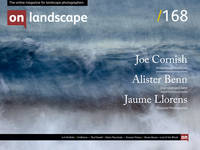A Selection of Photographs from a Group Trip to the Faroes

Adam Pierzchala
Now retired, I have more time to enjoy being out with my camera looking for scenes and subjects that pique my interest, especially coastal, woodland and close-ups. Although I still have several rolls of 35mm and MF film in my freezer, I shoot almost exclusively digital now

Richard Childs
Richard trained as an Orchestral Percussionist in the 1980's but his true love has always been the outdoors and particularly mountain environments. Throwing in his drumsticks to become a full-time photographer in 2004 he continues to work with a large format camera alongside digital equipment and exhibits his work in solo and group exhibitions as well as at his own gallery in the Ironbridge Gorge. Links to Website and Facebook

Pete Hyde
A widely travelled landscape photographer with a passion for composition.

Harvey Lloyd-Thomas
A photographer who enjoys exploring wilder and remoter landscapes, searching out unseen details, while attempting the occasional photographic vista. Also partial to the odd image of rust and decay

Dave Martin
Dave is an environmental planner and amateur photographer who enjoys exploring the impact of time and the environment on man’s endeavors – in particular, rusty old sheds.
The Faroe Islands, an archipelago of 18 self-governing islands but belonging to Denmark, are located at around 62 degrees N in the North Atlantic, approx. 300km north-west of Scotland and some 430km south-east of Iceland. Benefitting from the Gulf Stream, the climate is relatively mild but rather wet and at times very stormy. We certainly experienced some very windy times and when coupled with driving rain, photography was a challenge, to say the least! With a population of a little over 50,000, it’s not a crowded place.
The Faroese economy is about 98% fishing, which implies that tourism is still a very minor activity. Indeed as the tourist brochure says, when you consider the over 7 billion population on Earth, it’s a very small and exclusive group that have been to the Faroes! But in recent years, there’s been growing interest among photographers and some predict that it could experience strong growth as a photographic venue in the coming few years.
The islands are formed primarily from volcanic black basalt and hence as in Iceland, there are sharp jagged ridges and black sand beaches. Spectacular cliffs rise up steeply many hundreds of metres directly from the sea, while small uninhabited islands and sea stacks add to the other-worldly feel of the landscape; add to that stormy skies or colourful light at either end of the day and you have plenty of dramatic subject matter. But of course, seek and ye shall find and other, quietly anonymous cameos are available.
Back in summer 2017 five likely lads were considering where to go and play with our cameras. One of the group, Harvey Lloyd-Thomas, had visited the islands some years earlier and we quickly decided it would be worth visiting before it gets too crowded. Although landscape photography tends to be a solo pursuit, I for one really enjoy the social aspects and camaraderie of getting back in a group in the evenings, sharing experiences and perhaps looking at each others’ pictures on a screen of some sorts. The conversation, comments about composition and processing, seeing just what others have found as subjects all help me to formulate my own approach and extend my knowledge of photography and post-processing. But more than that, these “plenary sessions” also help me to open my personal boundaries on what constitutes subject matter – I’m more likely to go outside my comfort zone the next day.
We pooled our resources and after some research on the Web and seeing the hotel prices, a large AirBnB house seemed the best option for cost, flexibility and comfort. Given all our luggage and camera bags, even a large estate rental car would have been too small and renting a minibus proved to be better value than renting two saloon cars. This gave us plenty of room to comfortably spread out - a boon when sheltering from rain. I was surprised that even though we were booking some 8-9 months ahead, there was already restricted availability of accommodation and minibuses for rent.
In early May 2018 we found ourselves landing at Vagar airport and were soon on our way to Hoyvik, a small town close to the capital Torshavn on Streymoy, the main island. From here we had good access to many locations on Streymoy itself, also on the islands of Eysturoy and Vagar. And, most importantly, there was a well-stocked supermarket less than 10 minutes' walk from the house making domestic life very easy!
But what about the photography? Well, there are some very photogenic locations on these three islands and you can find plenty of images on the Web. The honey-pots certainly attract photographers but in early May the islands were generally very quiet. With the help of detailed maps, Google Earth and the geo-analytical skills in our party, we discovered several quiet spots where good images could be found that others, especially photo tours, might in all probability pass by as insufficiently iconic. In fact, only one location - the Mulafossur waterfall at Gasadalur - was busy with a photo-tour when we arrived, restricting our own image-making to a degree.
Apart from the fantastic coastline and inland mountains, there is plenty of choice with intimate landscapes and details, a good selection of boat houses with peeling paint, rusty corrugated roofs and various marine artefacts and village scenes and details. Whether you shoot colour or black-and-white, it is not difficult to find your own unique subjects. Oh and don't forget the waterfalls - both coastal and inland they come in various sizes and varieties.
The following selection of our "favourite four" as chosen by each of us, illustrates the variety of styles in our group, as well as the different subjects and locations that caught our attention.

